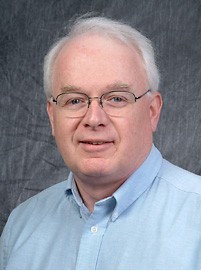 King's Chapel
King's ChapelI've totally lost track of time. September was a blur - the Annual Meeting trip was reasonably painless although the week was extremely busy. After NOLA, I had to go to San Diego for the Fellows Committee. Now that was an interesting experience. But I'm really glad I had the experience.
Linda and I did our Fall Saturday in Chelsea a few weeks ago. That was fun. I totally lost track of how many gallerys we visited, but the work was quite inspiring. Nice dinner at the Oyster Bar.
Last night I did the last session of this year's Art:21 program. One of the artists really caught my attention. Robert Ryman is a painter. He doesn't paint landscapes, or portraits, or figures, or still lifes. Instead, his painting is all about painting - the artifacts and characteristics that distinguish painting from other forms of visual art. Brush strokes, rough edges from masking tape, impasto - all of the physical things that distinguish painting, rendered in blank white. No story line, no narrative, no 'hidden meaning", no polemic. Just painting.
Many years ago, I had a discussion with Werner Feibes about aluminum siding. Werner was an architect who absolutely hated aluminum siding - he said that if aluminum siding was so wonderful, then why did people insist on painting and texturizing it to make it look like something other than aluminum? Why not just make it bare metal?
That's in essence what Ryman is saying about painting. His work celebrates the things that make painting unique.
The significance to photography is important. There is a tendency for photographers to feel that their work is inferior to other forms of visual art. The Pictorialists of the late 19th and early 20th centuries tried to emulate painting with the fuzziness of their images. Then, Group f64 came along to insist that photography is photography, and rather than being ashamed of that fact, photographers should take advantage of the technical characteristics of their medium to create work that is distinctly different from other visual artists. And now Ryman reiterates that same message.
I made some more palladium prints this week from digital negatives. I think I've concluded that the use of "curves" doesn't really enhance the process at all, but prints from digital negatives simply aren't as sharp, or as smoothly toned, as prints from original negatives. That presents a quandary - 4x5 is nice, but I would like to make larger prints - at least 5x7 and perhaps 4x10.
This image is a photograph from our visit to Boston back in July. We got to King's Chapel before they opened, but we were able to get inside the gate and set up for this picture before the crowds arrived.




No comments:
Post a Comment